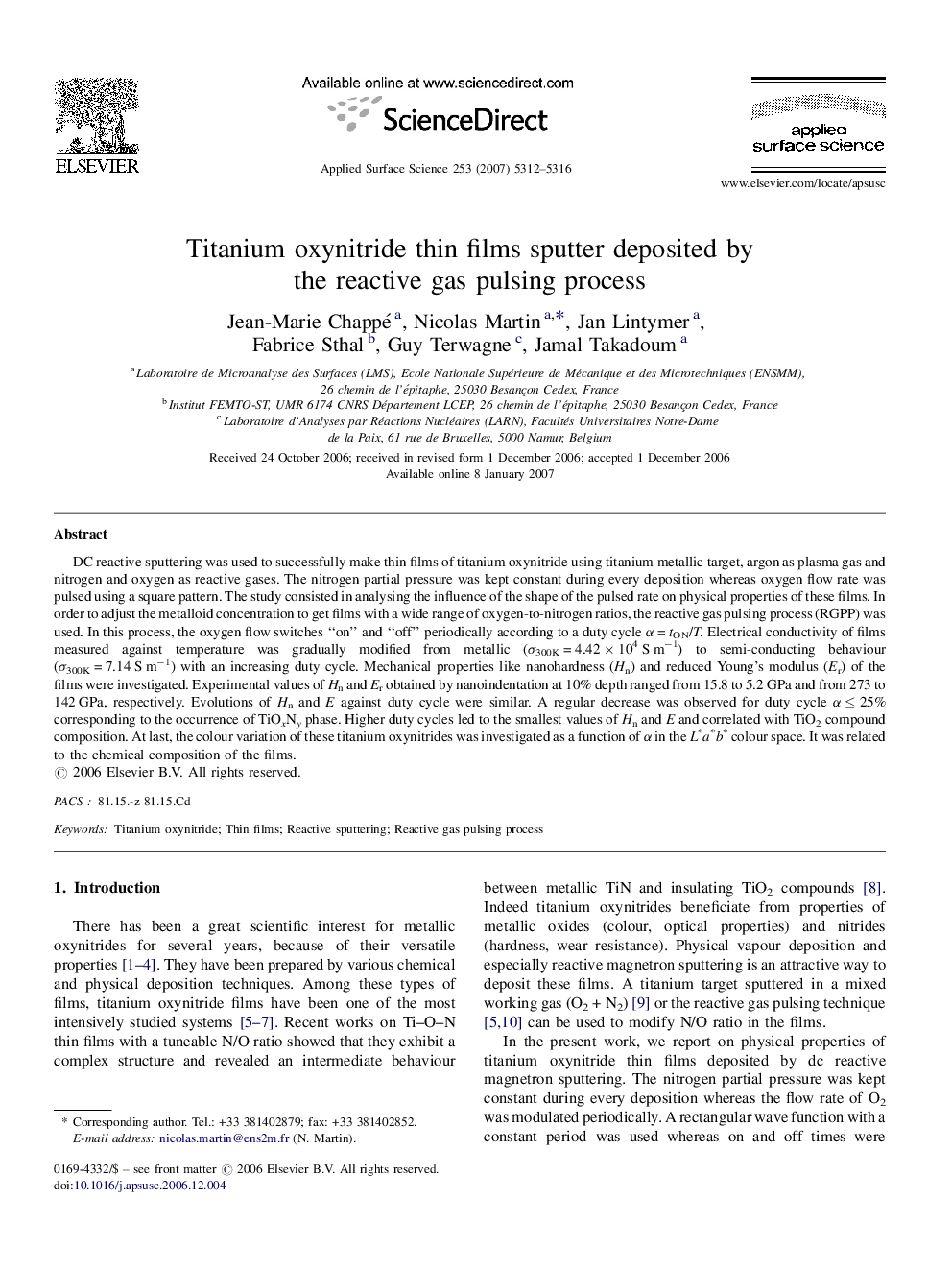| Article ID | Journal | Published Year | Pages | File Type |
|---|---|---|---|---|
| 5367109 | Applied Surface Science | 2007 | 5 Pages |
DC reactive sputtering was used to successfully make thin films of titanium oxynitride using titanium metallic target, argon as plasma gas and nitrogen and oxygen as reactive gases. The nitrogen partial pressure was kept constant during every deposition whereas oxygen flow rate was pulsed using a square pattern. The study consisted in analysing the influence of the shape of the pulsed rate on physical properties of these films. In order to adjust the metalloid concentration to get films with a wide range of oxygen-to-nitrogen ratios, the reactive gas pulsing process (RGPP) was used. In this process, the oxygen flow switches “on” and “off” periodically according to a duty cycle α = tON/T. Electrical conductivity of films measured against temperature was gradually modified from metallic (Ï300K = 4.42 Ã 104 S mâ1) to semi-conducting behaviour (Ï300K = 7.14 S mâ1) with an increasing duty cycle. Mechanical properties like nanohardness (Hn) and reduced Young's modulus (Er) of the films were investigated. Experimental values of Hn and Er obtained by nanoindentation at 10% depth ranged from 15.8 to 5.2 GPa and from 273 to 142 GPa, respectively. Evolutions of Hn and E against duty cycle were similar. A regular decrease was observed for duty cycle α â¤Â 25% corresponding to the occurrence of TiOxNy phase. Higher duty cycles led to the smallest values of Hn and E and correlated with TiO2 compound composition. At last, the colour variation of these titanium oxynitrides was investigated as a function of α in the L*a*b* colour space. It was related to the chemical composition of the films.
